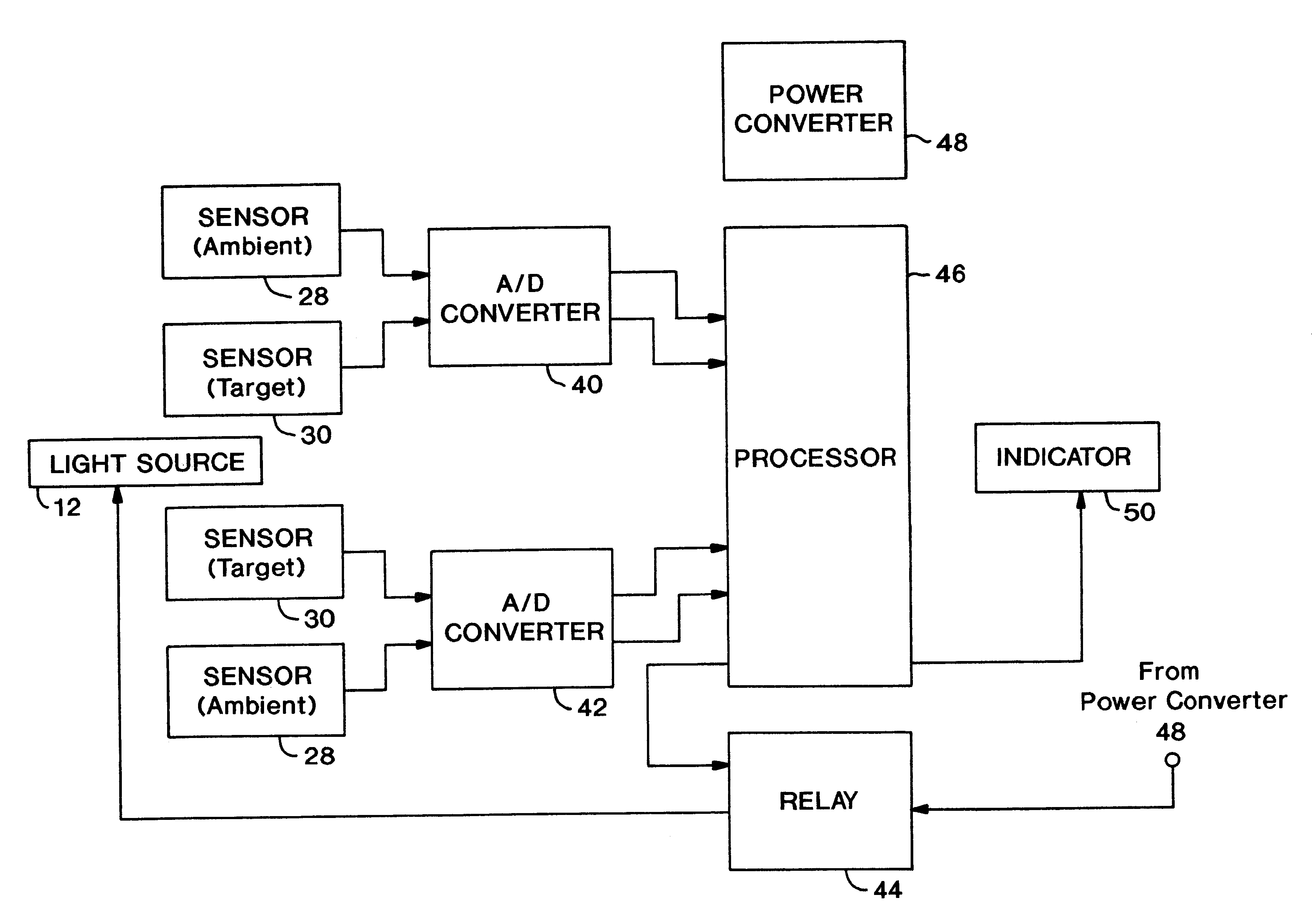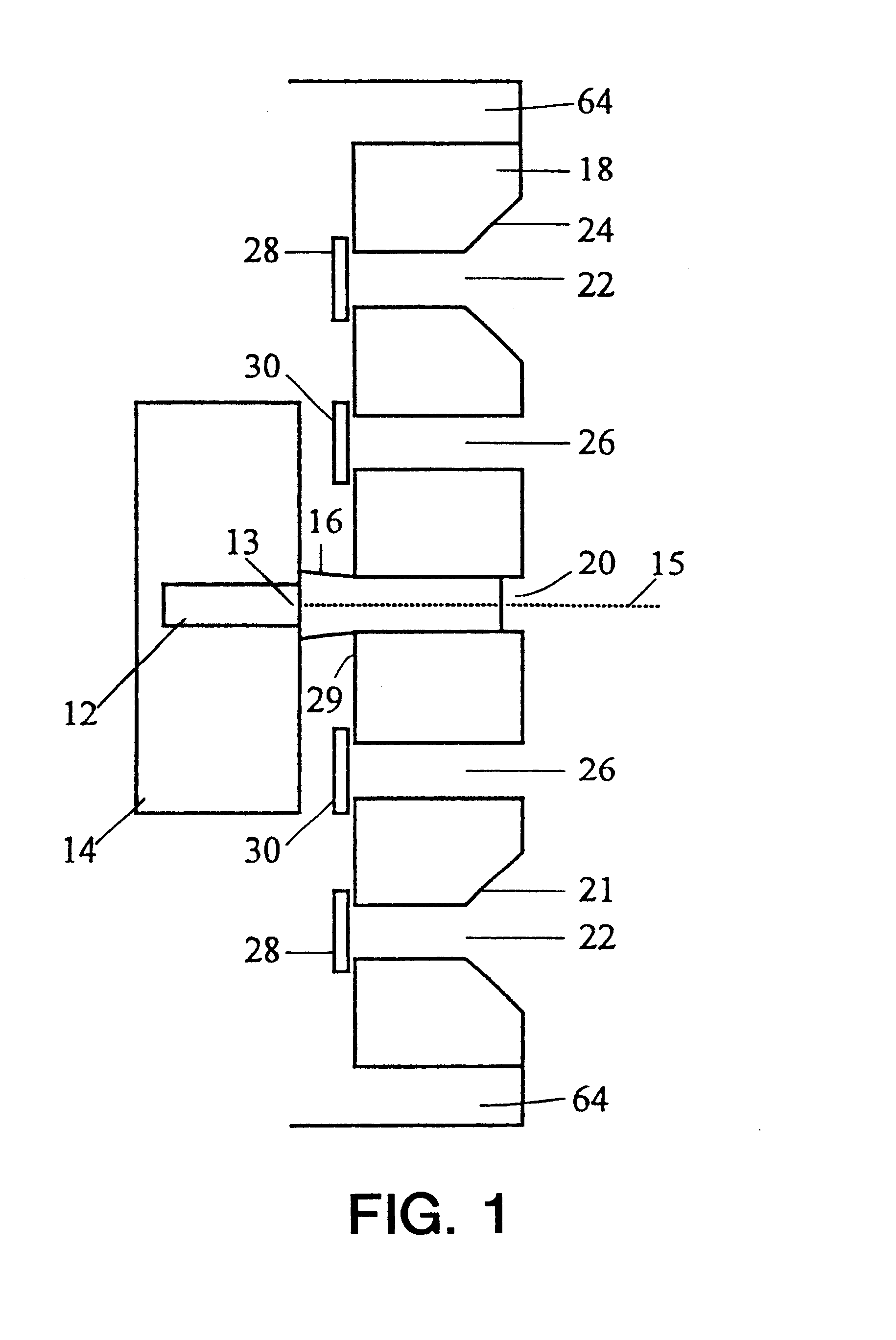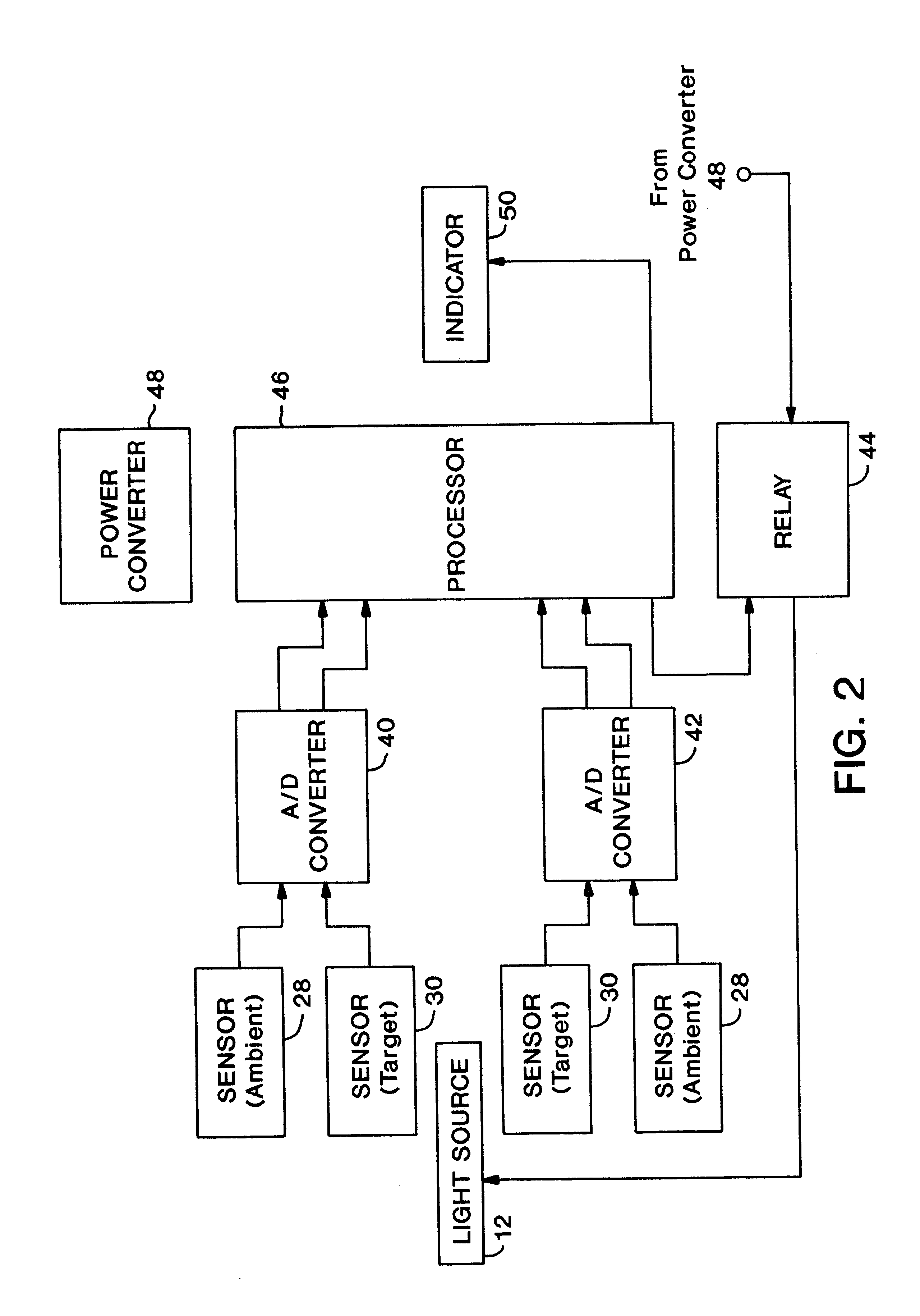Coupling alignment warning system
a warning system and coupling technology, applied in navigation instruments instruments for comonautical navigation, etc., can solve the problems of high or low coupling, damage to the truck, trailer and/or the interlocking apparatus, and the driver often experiences difficulty in aligning the throat of the hitch plate with the king pin
- Summary
- Abstract
- Description
- Claims
- Application Information
AI Technical Summary
Problems solved by technology
Method used
Image
Examples
Embodiment Construction
Referring in more detail to the drawings, FIG. 1 shows the transmitter / receiver components of the coupling alignment warning system (CAWS) 10 for aligning a towing unit with a towed unit by detecting ambient and reflected laser light in the system. In particular, the transmitter includes a laser light source 12 (preferably, a laser diode) that is mounted in an adjustable support 14 that is, in turn, attached to the interior of a rugged enclosure 64. In the preferred embodiment, rugged enclosure 64 is mounted to the towing unit during initial installation as described in more detail below (FIG. 3). The receiving components of the system, which are also shown in FIG. 1, include a spatial filter 18 and a series of sensors 28, 30. Spatial filter 18 has a series of optical tunnels 22, 26 that limit the amount of light that may reach both ambient sensors 28 and target sensors 30, that are positioned adjacent thereto, by restricting the angles at which light may impinge upon sensors 28, 30...
PUM
 Login to View More
Login to View More Abstract
Description
Claims
Application Information
 Login to View More
Login to View More - R&D
- Intellectual Property
- Life Sciences
- Materials
- Tech Scout
- Unparalleled Data Quality
- Higher Quality Content
- 60% Fewer Hallucinations
Browse by: Latest US Patents, China's latest patents, Technical Efficacy Thesaurus, Application Domain, Technology Topic, Popular Technical Reports.
© 2025 PatSnap. All rights reserved.Legal|Privacy policy|Modern Slavery Act Transparency Statement|Sitemap|About US| Contact US: help@patsnap.com



